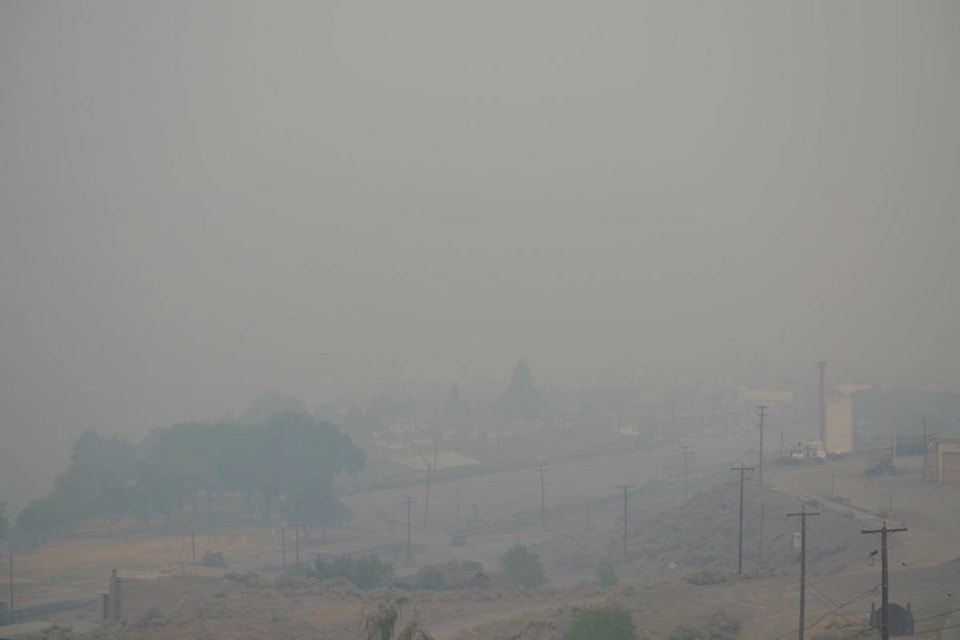Wildfire smoke is becoming an increasing hazard in many parts of the province, and has gone from being an occasional event lasting a few days to something that occurs almost every summer and can go on for weeks.
While the longer-term health effects of exposure to wildfire smoke have yet to be thoroughly studied, linkages between disease, death, and air pollution in general offer hints, says Dr. Courtney Howard, an emergency physician in Yellowknife.
“Stroke, heart disease, cancer, chronic or respiratory diseases, these are all worsened by air pollution,” Howard said in a recent interview. “The same reasons we want to quickly move to a low-carbon economy to decrease impacts from fossil fuel-related air pollution are reasons for us to worry about wildfire-related pollution we’re now seeing enhanced as a result of climate change.”
Wildfire season typically runs from early April to late October. As wildfire burns through forests and grasslands, it produces dense smoke that can be a major source of toxic air pollutants. This pollution contains fine particles that are not visible to the human eye, but which penetrate deep into the lungs and bloodstream, sometimes leading to serious health effects. Those at greater risk of these effects are small children, pregnant women, the elderly, people with lung or heart conditions, and people involved in strenuous outdoor work or sports.
Milder and more common symptoms of smoke exposure include sore and watery eyes; runny nose and sinus irritation; scratchy throat and mild coughing; and headache. Less common, but more serious, symptoms include shortness of breath; wheezing (including asthma attacks); severe cough; dizziness; chest pains; and heart palpitations.
Anyone experiencing any of the more severe symptoms should talk to a health professional or seek urgent medical attention.
To protect yourself during periods of increased or heavy smoke, limit outdoor activity and strenuous physical activities as much as possible. If you have difficulty breathing, reduce your activities or stop altogether, but watch for opportunities to get outside and be active if conditions improve.
Drink lots of water to help your body cope with the smoke. Keep outside air from coming in by properly sealing windows and doors and keeping them closed, installing a high-quality air filter to remove particulate matter from the incoming air, setting the HVAC system to recirculation mode, and limiting the use of exhaust fans.
When you are in your car, keep the windows closed and set the ventilation system to recirculate.
It’s not unusual to feel anxious, stressed out, sad, or isolated during a smoke event, so make sure to take care of your mental health. Eating well, getting enough sleep, exercising indoors, and staying in contact with friends can help. Anyone who is having trouble coping with symptoms of stress, anxiety, or depression should seek help from a health professional. Remember: a smoke event may last a long time, but it will eventually end. Sharing positive outlooks and attitudes will help you get through it.
When wildfire smoke is prevalent, check the air quality before going out. The Air Quality Health Index is a scale designed to help you understand what the quality of the air around you means for your health. You can check local air conditions at https://bit.ly/3i4taNU.
editorial@accjournal.ca
Like us on Facebook and follow us on Twitter
